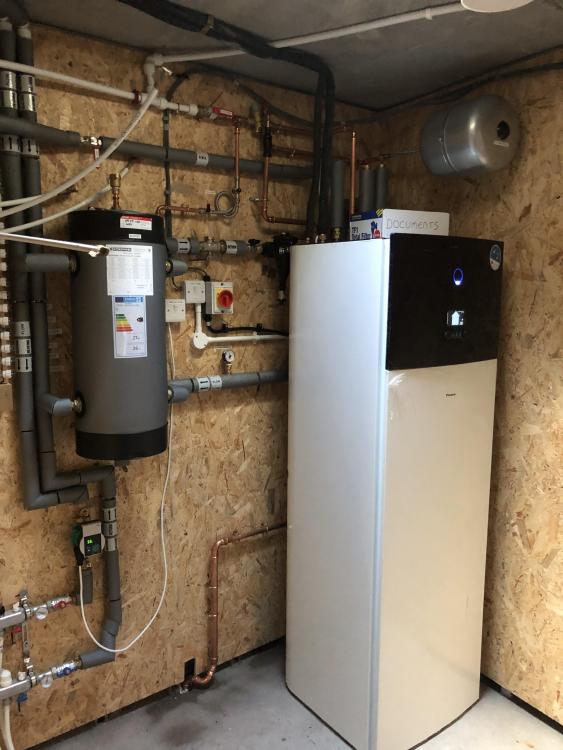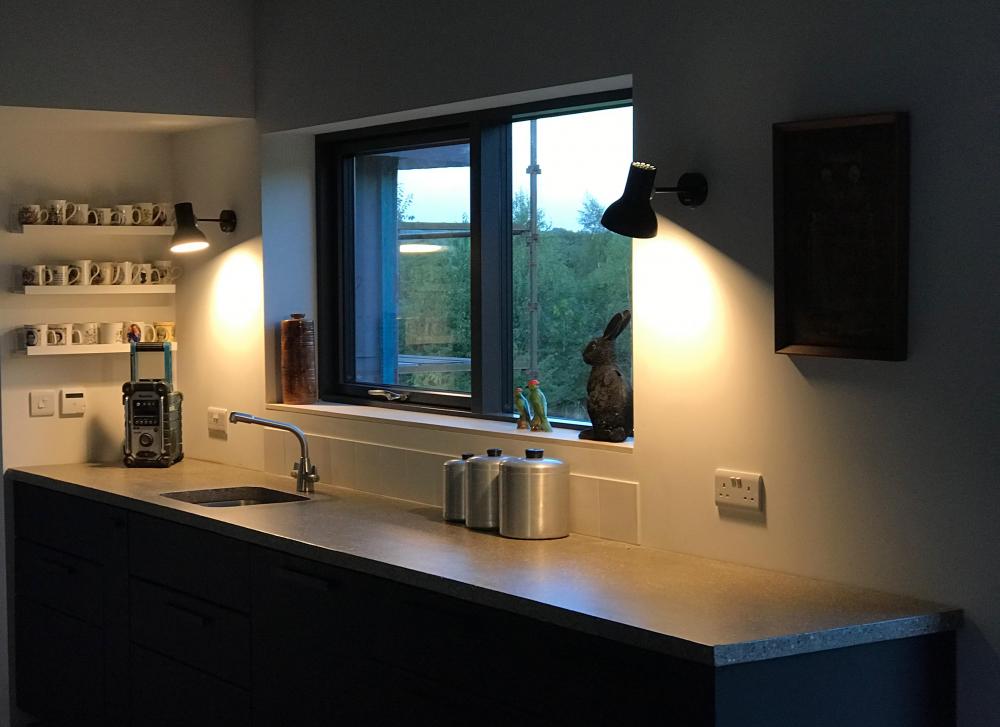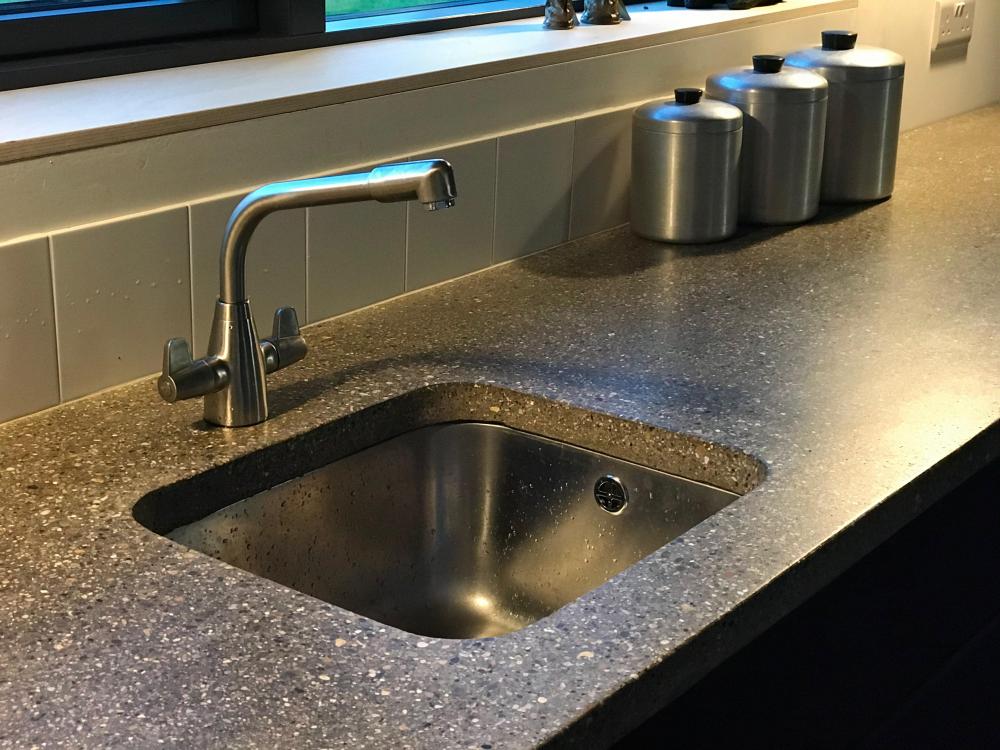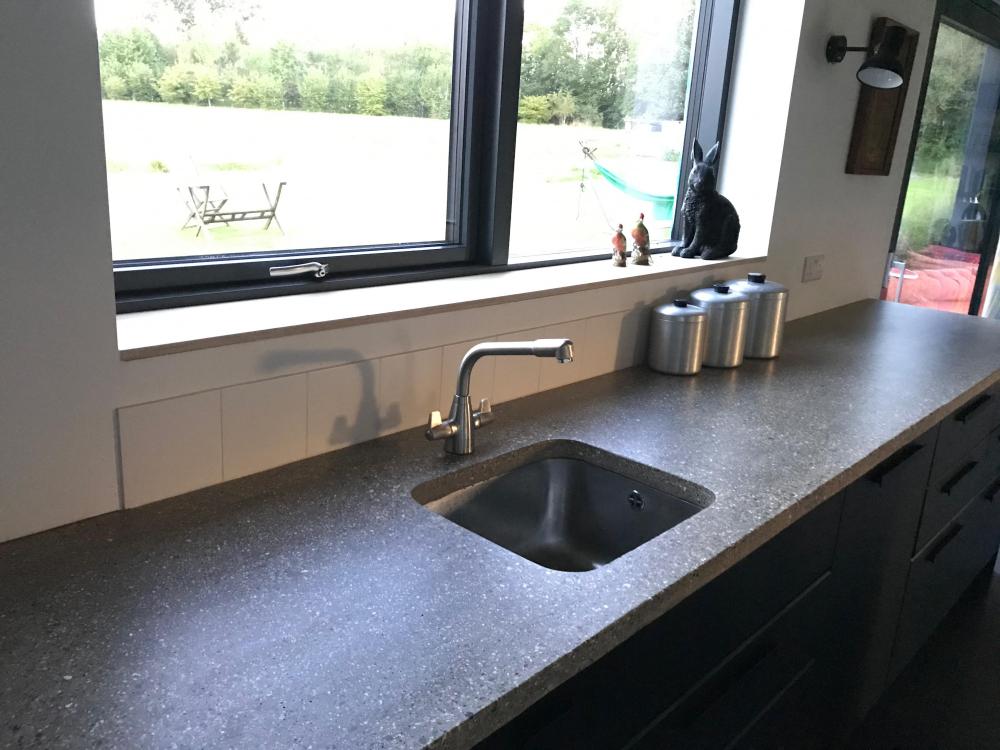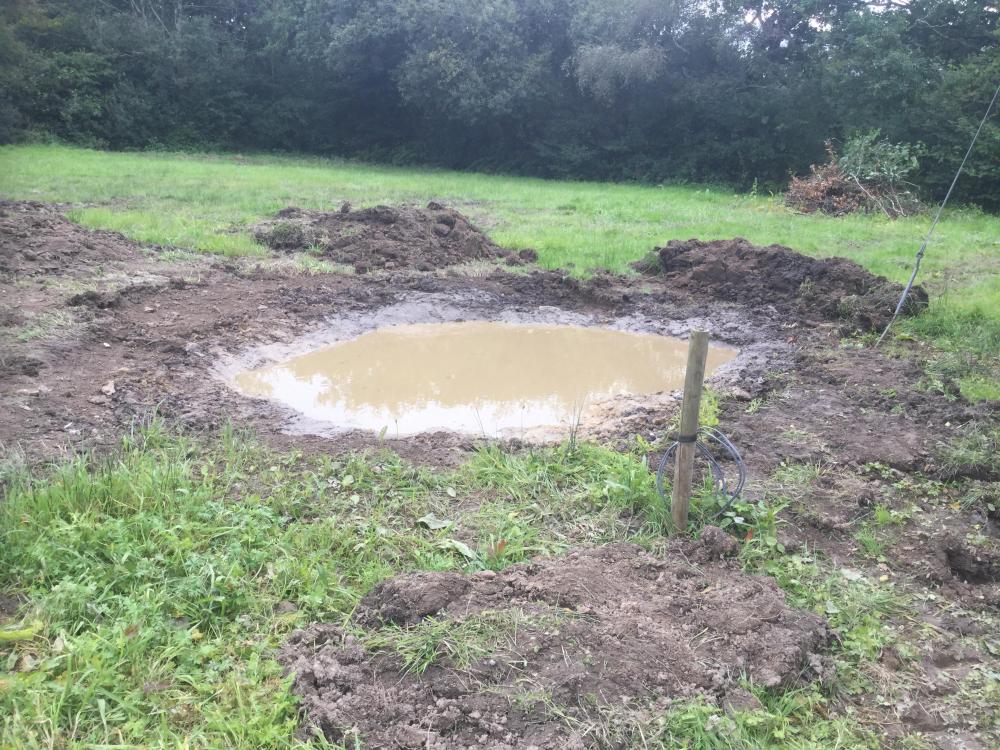Leaderboard
Popular Content
Showing content with the highest reputation on 09/29/20 in all areas
-
Looking at about £145k for us to get watertight - inc ground works but excluding design, planning, BC fees etc. (£15k ground works, £75k walls/floors, £25k roof, £30k doors and windows.) That's about 60% of our budget. That's for a 300m2 ICF 1.5 story house with basement, built to passive standards.3 points
-
The house insurance call is a good Plan B. If the level has raised over time, then it will have achieved a position where it cannot be enforced under *Planning* rules due to time (10 years?). There may be some "right to support" achieved under Common Law, which I think is 20 years, by the same process that a "right to drain onto adjacent land" is created by the existence of such unopposed and tolerated drainage. I am not sure of the detail on that. I do not think you will fix this easily through legal process; imo redoing the wall may be less expensive. Would your insurance covers it if it collapses? On the BBQ, are you sure it has moved, or was the BBQ built away from the wall? I would do so if I was aware, and would have documented it. Horribly tricky. Sorry you have this issue. Ferdinand2 points
-
Definitely not alone. Often the fear of making the wrong decision, or choosing the wrong tradesmen, or not being good enough at it yourself, is paralysing in itself. Not sure it's a solution, but I do find that getting a quote, but then doing it myself is good, as I know however bad I've done it, it's saved a load of £££. Plus, I visit building sites regularly (for my job) and see what kind of horrors go on there. So I console my mistakes with, cheaper, and better too.1 point
-
hi mark, welcome to the forum, it looks like it's going to be a chunk of a building and will need quite an amount of insulation. having 250mm of concrete is good but also a big heat sink. i would be looking at building inside the steel if possible to avoid the cold bridge and if you attach to the steels for a floor then something akin to armatherm will break your cold bridge.1 point
-
Whoever it is may want to be assured any volume change in the ground between the bearing point of the piles and the surface will not lift you piles. They may just want a slip plane between the piles sides and the ground to reduce friction. Perhaps a sleeve around the pile. This is not my line of work but I know this is not a delusion on my behalf.1 point
-
The cost of melamine, bagged concrete, sealer, wire mesh, PIR board, grinder and discs was about £650. And a few boxes of beer for the heavy lifters.1 point
-
Have you looked at your and their title deeds? Sometimes the old ones have "T" marking which walls or fences are yours.1 point
-
i’m moving to Kent... There was an interesting snippet on a recent Beechgrove Garden I caught up on this week, where the presenter was talking about Gardeners’ Delight tomatoes, and said her dad had got double her harvest per plant by growing them as a bush tomato ie no pruning, rather than her growing them as a tall and pruned.thing whatever it is called.1 point
-
Our tomatoes got a real hammering from the strong North wind this weekend so this is the last pick. This has been our best year yet for tomatoes and we've been picking two or three times a week throughout the summer. Wendy grew them from seeds from a supermarket cherry tomato that tasted particularly good. I planted eight of them out into pots and we just kept chopping the top off the plants when they got over 1m high.1 point
-
There you go then. When you meet tomorrow then just straight up ask what can he do for you with regards removing spoil, hardcore etc. Be honest your not interested in trying to do him over for cash and would rather come to some sort of agreement over what help he can give to you. Guarantee he will be getting hardcore much cheaper than you ever could. Plus don't forget his black book of lorry drivers, digger drivers, plasterers, sparks etc that you will need. With his build only over the road you can easily see if his work is good or not.1 point
-
@markc and @ZacP thats in Northern Ireland btw - you'll need to adjust for your areas.1 point
-
Piles should go straight through any (shallow) clay layer isolating the structure from heave or shrink1 point
-
If you know when the system was fitted, it will be possible to work out what scheme it is on and what the payments are.1 point
-
Just to point you in good direction - I went quite far with Fleming homes, down in the borders, very competitive and good outfit, repsonsive etc. I would have chosen them if they did SIPS. But if you are TF I would contact them for a price. If you look up @Redoctober's blog he used them and reported well.1 point
-
1 point
-
Unless the made ground is overlying clay there should not be heave issues. Ask them why they are included and if not required you could deduct the cost.1 point
-
About 55%. Depends a bit on if you first fix inside before. Also you may have a timber frame with windows and roof fitted but no brickwork / gutters etc. Service connections can be costly.1 point
-
I wired a loft conversion a while ago where the window was too high. BC insisted they made a 1" high fixed step in front of the window. I suspect the step did not remain long after the completion certificate was issued.1 point
-
We have a fire escape window that is higher than 1100mm, I pointed it out to bc and said it’s a sticky thing that I need to discuss with you. He just told me to build a step up to it, but it must be a permanent feature, ie not a pair of steps that could be removed from the room. I will build it onto the floor all screwed down and chuck a bit a bit of carpet on it. Regarding habitable rooms, we have had to put fire escape window in our office as it would be very easy to just put a bed in there and it’s instantly another bedroom.1 point
-
2nd generation smart meters can measure export, hence the Smart Export Guarantee scheme that replaced FiT for new installs. Existing Fit's can switch over to the SEG I believe, but you'd have to fully understand your usage and do the sums carefully to make sure you weren't out of pocket.1 point
-
As far as I am aware Smart meters are not set up to detect how much is or is not exported, so as it stands just now it wouldn’t make much difference, however personally speaking I would avoid Smart meters for a different reason. My reasoning to avoid Smart meters is that it enables variable tariffs to be implemented in the future, so what the electric provider could do is say charge you 10p a unit during sleeping hours but say at dinner time charge you £1 a unit so as to discourage usage at certain times of day because of possible lack of generation capacity. Only my theory so don’t quote me on that? Anyway in the grand scheme of things there is no advantage to you getting a Smart meter.1 point
-
Mathis? Wasn't aware you pointed grout tbh. Ram it in then wipe off with sponge at 45deg so as to never run along a grout line and inadvertently remove the grout.1 point
-
1 point
-
1 point
-
There's another free AECB webinar about airtightness on 1st October. https://zoom.us/webinar/register/WN_aWesPg6_QuWAior4F5lxsg1 point
-
When you're a hammer, all the world looks like a nail. Now, this thread is incorrectly named as Brexit occurred Jan 2020. What we are experiencing is the end of the transition period with or without an equivalent agreement. Not as catchy.1 point
-
Agree - 2nd fix. Quite often fixings is supplied with sanitary ware can be of poor quality. We bought some very expensive stone baths but the supplied waste fitting (intended to sit under the bath on floor) was a bit cheap useless and we had to do quite a bit of remedial work to chop a hole in the floor and put a proper waste fitting in. As long as it's itemised (to a degree) and matches the work done, pay up.1 point
-
FIT payment is paid on the total generated, each quarter you submit your meter reading which then gives you the total generated for the month. They then work out your total payment using a 2 part sum, say you generated 300 units for the month then depending on the contract the sum might br something like: 300 x 12 p = £36 plus a presumed export back to the grid payment usually an additional 50% so £18 gives you a total payment of £54 The presumed payment for export is just that, presumed, so it doesn’t matter payment wise if you use it or not, that is why solar diverter became popular as it uses up the the surplus electricity diverting it to water heaters or similar.1 point
-
Looks good to me. You will need some method of filling the UFH and buffer but another F&E will be easy to add. Immersions in all the tanks are a good idea - even the buffer. It can act as your secondary dump for excess PV too.1 point
-
It's not "dual flush" that is the problem, it's the modern release valves. These often leak a trickle regardless of whether they are dual or single flush. Lets all go back to syphonic flushes. They did not leak.1 point
-
1 point
-
1 point
-
I’m still thinking about this and wonder if we are overly worried about how long it takes to get hot water to a tap. Things ive thought about. 90% of the time I need a wee I’m out around our land and wee in the bushes, so never wash my hands. I asked the wife wife if she waits for the hot to come through when she has been to the toilet, she said no she uses soap and cold water. If if I go to have a shower I turn on the mixer and then get undressed, so the hot is there by the time I step in. If if I want a bucket of hot to wash something in the garden I place a bucket in the sink and let it run, it takes a minute to fill a bucket and I don’t want it all hot so what’s the problem there. I think with building a new house we want everything perfect, instant hot water taps and stuff, what happened to just flicking the kettle on I think it’s all getting a bit carried away.1 point
-
Sounds like you haven't understood the quote when reading. It might not be the norm with all subbies but that seems pretty clearly worded to me. 350 isn't massive.1 point
-
2nd fix Its perhaps not worth falling out over a small amount of money As you might need him back for any teething problems1 point
-
Perhaps you would have been better telling Thames water their outside stopcock had stuck in the shut off position and you had no water supply, pretty sure they would have to come out then. Once the workmen arrived I doubt they would care exactly what the problem was and just replace it or fix it.1 point
-
@Mike_scotland Just FYI. I'm currently using David Narro associates (Glasgow and Edinburgh) they are hired by my kit supplier (SIPSECO) to do the superstructure design costs are as per above which is included in my kit price. But I agreed to select them as they were happy to work with tanners for the foundation design and also do the SER sign off and didnt really bat an eyelid. Whereas lots of other didnt want to commit to that. They done my SI 3 weeks ago (400 quid) and will do the SER for 600 (might be 650). So far seem to respond quickly and quite diligent. SI report was delivered back within 2 days and have done foundation loads for me with 2 weeks. I can provide an update once they finish in few weeks if you like.1 point
-
Firstly they need planning permission to raise ground levels more than about 150mm. Comes under "raised platforms". However the planners may ask if you have any evidence the level has been raised. There is also a 4 year "statute of limitations" so if more than 4 years ago the planners can't take action. Normally retaining walls are the responsibility of the supported land. I think you need to decide if you want to own the wall and how heavy you want to get at this stage. It doesn't look too bad to me at the moment. If it's your wall and they have raised the ground levels and it's damaging the walI I believe they could be liable but you might have to prove it in court. http://www.boundary-problems.co.uk/boundary-problems/fences.html If it's their wall and it fails they are not obliged to repair it (There is no obligation to fence land). However if it becomes dangerous or causes injuries they can be held liable. Retaining walls can be very dangerous and Building Control may take an interest. http://www.bbc.co.uk/news/uk-wales-north-east-wales-19841005 If it's your wall you are not obliged to replace it with another wall unless they have acquired a right to rely on it for support. Let's suppose you detect the wall getting worse and a friendly chat fails to get them to lower ground levels. Then I supose you would have to get a solicitor involved. I would expect a solicitor would write to them and say something like.. You are concerned that rising ground levels is causing the wall to lean and might be putting the wall at risk. He might point out that you do not know who owns the wall but that.. a) If it's yours and it falls down due to their actions you may hold them liable for repair costs. You do not believe they have a right of support and you do not consent to them using it for support (aka a retaining wall). b) if it's their wall then they are liable for it's maintenance (if they want to keep the wall) and any injuries or damages it causes if it fails. Copy BBC article. You could also add that if someone continues with actions after being warned of the danger (as you are doing in this letter) and that leads to damage to life or property they can also be held liable for additional damages for negligence. Meanwhile I would check your own house insurance.1 point
-
only if they’ve been set to run 100%. I installed one with a 5 min/ hour run time from 6am-midnight in a commercial building and it saves about £300 year on gas and electric.1 point
-
We paid our builder in arrears not in advance. On one occasion he asked for help with his cash flow and I agreed to pay him in advance for our windows. I paid the amount the window co had quoted less VAT because I couldn't reclaim it. We had a pretty good relationship and I never had any concerns about him. If I had I would have paid the window co direct. We had agreed a %5 retainer and deducted that from each stage payment rather than the whole 5% from the last one. At least twice our builder proposed changes that were going to cost more. Easy time we asked him to formally write to us ammending the quote before agreeing them. Both times his proposals were a good idea. Example, adding a velux to a store room in the roof space.1 point
-
What @ProDavesays. Basically you want to dump the power into appliances. Then use Economy 7 as your back up option for winter.1 point
-
No 1, make sure on completion the FIT is transferred to your name, make that a condition of the contract. you then submit a quarterly generation meter reading and receive a quarterly payment for that. Easiest way to self use most of what you generate is to use all the big appliances like washing machine, tumble dryer, dishwasher etc close to the middle of the day, one at a time. the solar iboost just works on it's own to send any surplus to the hot water tank, so best to arrange the hot water heating to not heat the tank in the morning so there is plenty of capacity to dump heat into the HW tank. If you are heating just by electric heaters, then run those in the day as much as possible, though with little insulation you won't be able to avoid using them in the evenings. a new heating system would be my No 1 priority. Gas, Oil etc or if you can make the figures work, an Air Source Heat Pump, but you need a pretty good idea of the heat loss from the house to work out if that will work. e.g my little 5kW ASHP heats our well insulated house nicely but would barely scratch the surface of the heat needed in an old stone house.1 point
-
Oh yes, there are very many timber framed houses, some hundreds of years old!!! Just needs designing properly.1 point
-
1 point
-
OK thanks for the figures. For your income, this will need to be reflected on your tax returns for the last 3 years. For the sake of this, assume you have a total of £1M. You could look at sites on the market at between £300k and £600k. Rightmove has these withing 40 miles of Greater London: https://www.rightmove.co.uk/property-for-sale/find.html?locationIdentifier=REGION^87490&maxPrice=600000&minPrice=300000&radius=40.0&propertyTypes=land&primaryDisplayPropertyType=land&includeSSTC=false&mustHave=&dontShow=sharedOwnership&furnishTypes=&keywords= You could refine the search with keywords, but it will give you and idea of what is available. I doubt you will find any bargains on Rightmove but is is worth looking at what looks OK, just to get your eye in. Existing houses to replace are also an option. You can often double the size with the replacement. As you have the income and the energy, you may be better off doing this now rather than waiting five years. Life is short.1 point
-
If you have the salary that you say then there is no gain whatever from doing any of the work, stick at what you do best and just sign the cheques, be a very good manager, and not a poor bricklayer.1 point
-
1 point
-
Not heard of those, just had to look it up?. No the jcb does not but the furgy does. A local friendly farmer says the stones are not a real problem (now I have spent weeks picking them up!!) and when it’s drier he is going to come over with a power Harrow to get the ground ready for grass seed. Latest update........ just dug a wildlife pond, for once the clay we have has helped, visiting granddaughter loved helping puddle the clay (and falling over in it!). Been 48hrs and it appears to be holding water, just need to grade the banks .1 point
-
We have a pretty standard "passive slab", which is also the foundation for the house. The under-insulation build up varies a bit with the type of soil, but in our case we excavated to a depth of 150mm over the whole area of the house, plus about 300mm all around. This was filled with type 3 stone (18mm to 35mm, no fines) compacted in layers until it was 150mm deep (so the same as the ground level. On top of this was laid a 25 to 50mm thick layer of coarse blinding grit, very carefully levelled. The EPS insulation was laid directly on to this, with L shaped sections all around the edges and the interior filled with over-lapping 100mm thick EPS sheets. The DPM was laid under the last 100mm thick insulation sheet. The steel reinforcement fabric was then laid in place, including a reinforced ring beam around the edge and for two internal load bearing walls. The UFH pipes were fitted, then the concrete was poured and power floated smooth. The whole process of laying the foundation to finished and level slab, with UFH pipes in, took 4 days. So, the build up, from the bottom, is 150mm compacted type 3, plus grit blinding, 200mm of EPS, DPM, 100mm of EPS then 100mm of reinforced concrete on top, with the 12mm floor finishes (travertine and bamboo) on top of that. It's documented in our build blog, starting at about this entry, with photos: http://www.mayfly.eu/2013/10/part-sixteen-fun-and-games-in-the-mud/1 point
-
As someone's already mentioned, "thermal mass" isn't a measurable parameter, has no units associated with it, and no known way of calculating what it actually is for any material. Concrete and screed are very similar in terms of heat capacity (defined as the amount of heat energy required per unit mass, or volume, per unit change in temperature) and thermal conductivity (defined as the rate at which heat energy flows through a given thickness of material for a particular temperature differential). There won't be a significant, or even probably detectable, performance difference between laying UFH pipes in the slab and laying them in a screed on top of a slab, in practice, particularly if the overall heating requirement is low, so the UFH temperature is also low. If the heating requirement is significant, say more than about 40 to 50 W/m2, then there may be a very slight advantage in terms of initial heat up time to laying the UFH in a screed, the question is really whether it's worth all the extra cost and time involved. My own view is that, for a well-insulated house, with a decent level of airtightness, and MVHR to significantly reduce the ventilation losses, then the heating requirement is so low as to make it not worth considering all the additional cost and time involved in laying UFH in a screed on top of a slab, especially as it increases the overall floor height build up and the screed adds nothing structurally. We have a 100mm thick slab, with the UFH pipes cable tied to the top of the steel reinforcement fabric on 200mm centres, so the centre of the UFH pipes is around 42mm below the surface of the floor. Our slab was power-floated dead flat, so the floor finishes (12mm thick travertine stone and 12mm thick bonded down bamboo) are laid directly on to the slab. This was a pretty cheap and quick way to get a heated finished floor.1 point




.thumb.jpg.bac90f3bbf6868cf2118d010d936c99d.jpg)





